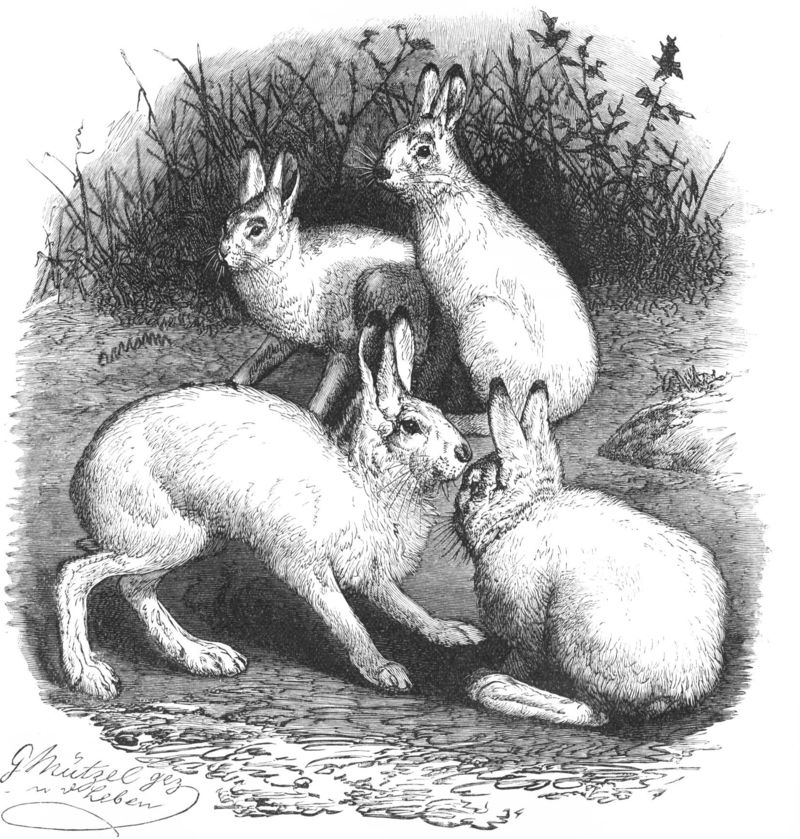|
| Query: Small blue | Result: 708th of 890 | |
mountain hare (Lepus timidus)
| Subject: | mountain hare (Lepus timidus)
| | Poster: | Wiki Photos (---@---.---)
| |

| Resolution: 1652x1732
File Size: 776878 Bytes
Upload Date: 2023:02:08 13:38:28
|
Original caption: "Nordischer Schneehase, Lepus Timidus L. 1/3 natürlicher Größe."
Translation (partly): "Mountain hare, Lepus timidus L. 1/3 natural size."
Originator: Gustav Mützel (1839–1893)
Source: Brehms Tierleben, Small Edition 1927
Source: https://commons.wikimedia.org/wiki/File:Nordischer_Schneehase-drawing.jpg
The mountain hare (Lepus timidus), also known as blue hare, tundra hare, variable hare, white hare, snow hare, alpine hare, and Irish hare, is a Palearctic hare that is largely adapted to polar and mountainous habitats. Lepus timidus is distributed from Fennoscandia to eastern Siberia; in addition, isolated mountain populations occur in the Alps, Scotland, the Baltics, northeastern Poland, and Hokkaidō.
Order: Lagomorpha
Family: Leporidae
Genus: Lepus
Species: Lepus timidus Linnaeus, 1758 |
^o^
Animal Pictures Archive for smart phones
^o^
|
|